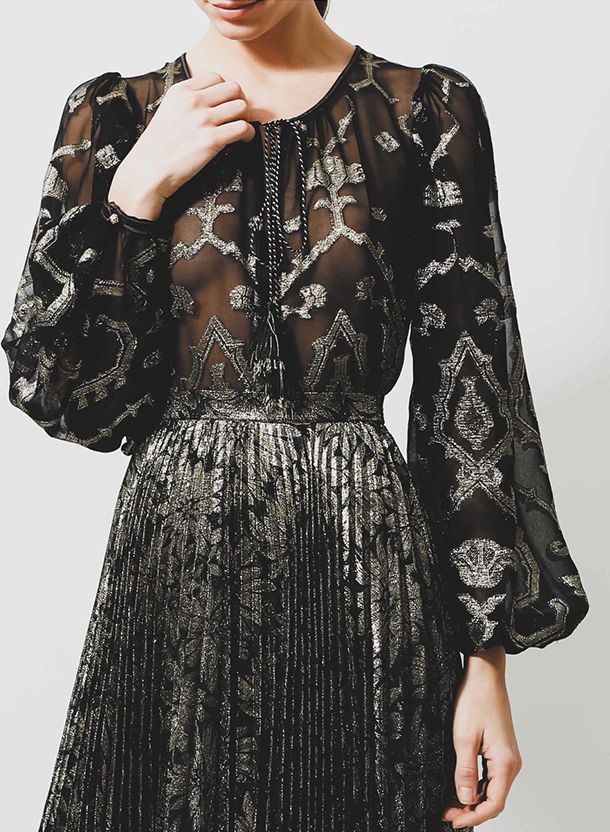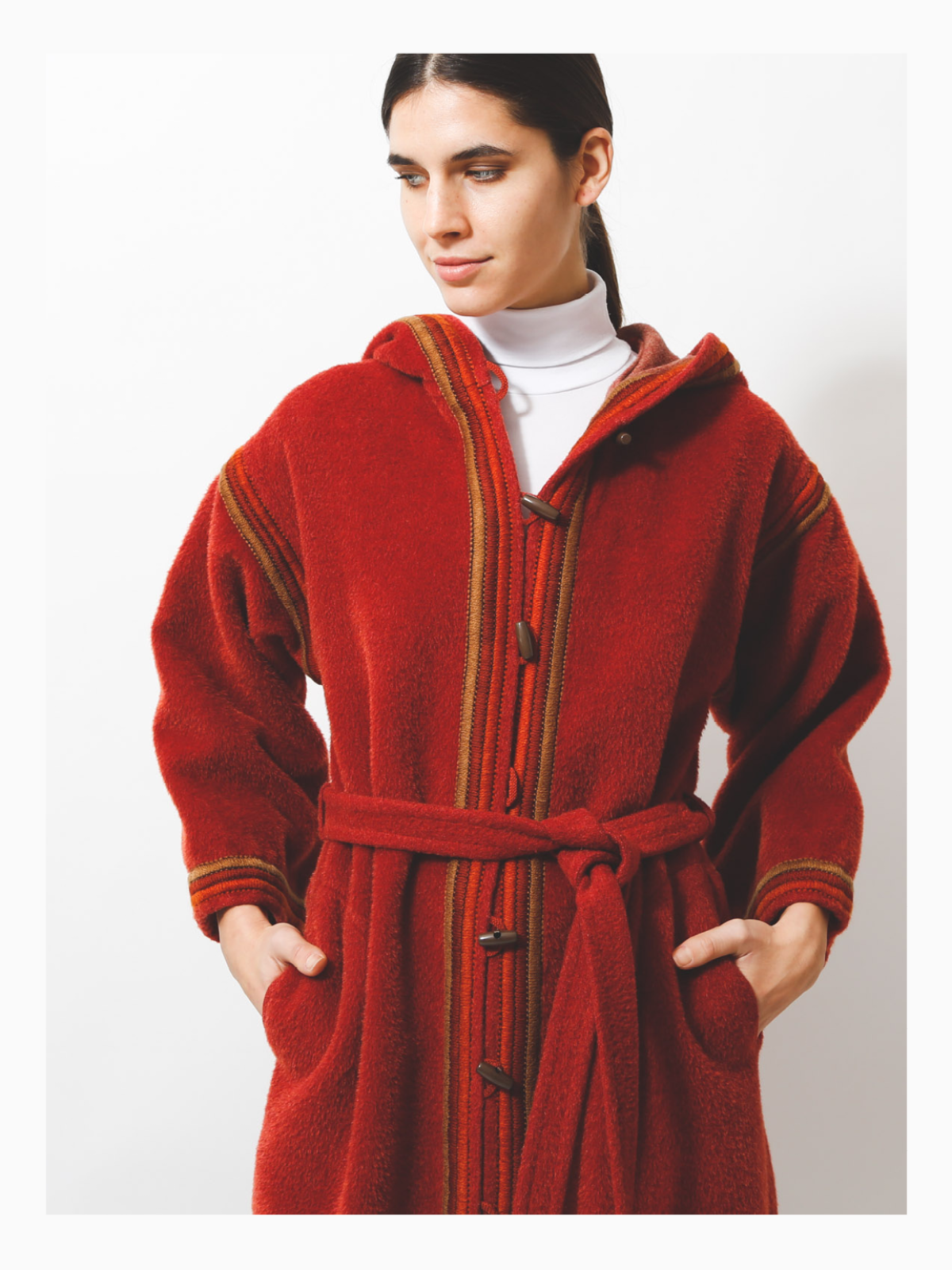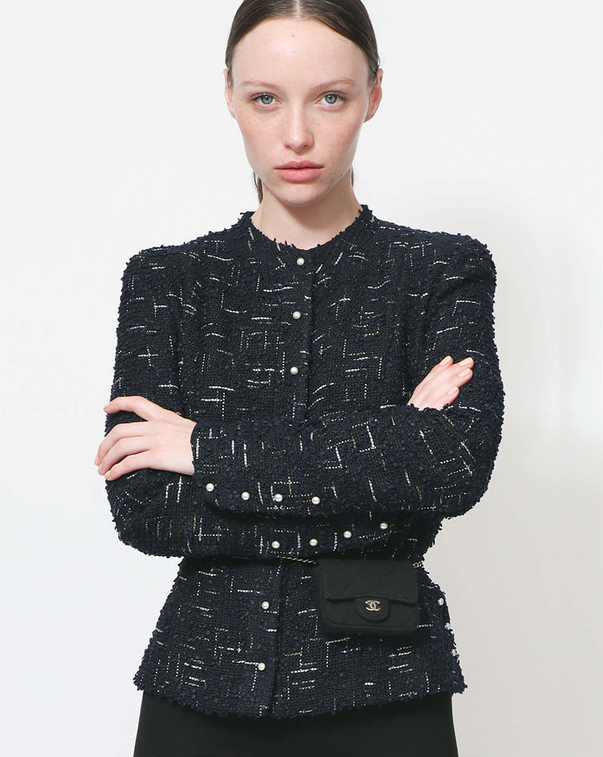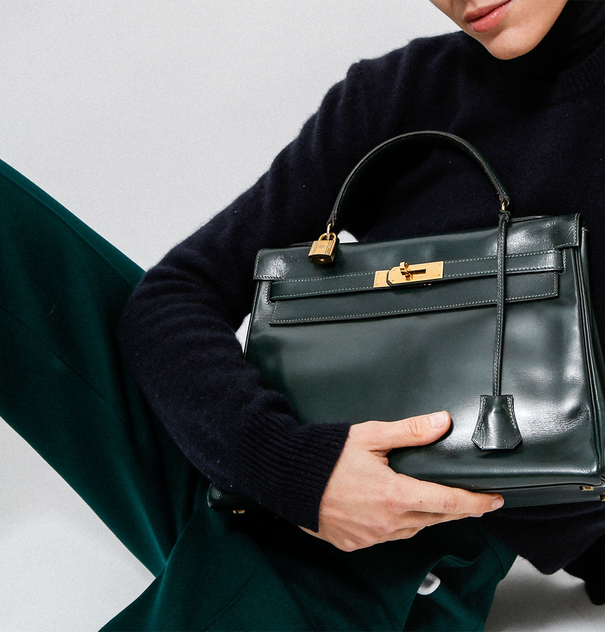Yves Saint Laurent

Photo credits: F/W 1976 Documented Russian Lamé Ensemble
Chanel gave women freedom.Yves Saint Laurent gave them power.
- Pierre Bergé
Genius. Fragile. Nomadic. Shy. Tortured. Silent. Passionate. Endless adjectives have been used to describe the talent and complexity of M. Yves Saint Laurent.
At only twenty one, Yves Saint Laurent became the world’s youngest couturier, succeeding M. Dior after his passing. His first collection, known as the “Trapeze Collection”, carefully followed the silhouettes of the House, and was brilliantly received. But even at a young age, Yves Saint Laurent sought to provoke his contemporaries and modernize the way women dressed — his following collections introduced vibrant cuts, prints and fabrics. They challenged the strict norms of 1950s Parisian couture and caused an outrage, ultimately leading the young designer and Dior to part ways.
And yet Yves Saint Laurent had been right – by the 1960s society had evolved in such a way that the codes of Haute Couture had become obsolete. Women wanted to be freed – they wanted to dress themselves, elegantly, effortlessly and affordably. Inspired by the street and a more inclusive view of fashion, Yves Saint Laurent opened his first ready to wear boutique in 1966, becoming the first couturier to do so.

Rare 1970 Berbère Coat
The overwhelming statement that Yves Saint Laurent made with his ready to wear collections was that of liberation and empowerment. The late 1960s was charged with radical social revolt and the sexual revolution. Women no longer wanted to be tied to a constricted nor dated view of femininity, they wanted to be free to feel beautiful with their modern definition of what beauty meant; Yves Saint Laurent celebrated this beauty by not only observing the moment, but fully absorbing it. In 1966 he introduced perhaps his moment memorable piece, the Tuxedo. It was the first time a couturier had taken a men’s garment and adapted it for a woman. It was powerful, elegant and timeless. It was also ahead of its time and Saint Laurent’s haute couture clientele did not understand it – only one piece sold. Conversely, his younger, more avant garde, rive gauche clientele adored it and it has gone on to become an emblem of the house, revisited in almost every collection since.
For a woman, the tuxedo is an indispensable garment in which she will always feel in style, for it is a stylish garment and a not a fashionable garment. Fashions fade, style is eternal.
-Yves Saint Laurent
Saint Laurent’s gender defying approach to fashion continued as the year following he introduced the first pantsuit for women, the iconic Safari jacket in 1968 and the jumpsuit in 1969. All pieces inspired by menswear and re-adapted for the female form. The Safari jacket and Jumpsuit both originated as functional garments versus fashionable ones. Part Yves Saint Laurent’s genius was taking utilitarian pieces and re-working them into timeless staples of a women’s wardrobe. In doing this he ushered in a sense of power to women’s dressing that had previously been reserved to men.
My style is androgynous. Since I noticed that men had much more confidence in themselves and in their clothes and that women were not so confident in themselves, I sought to give them confidence and a figure.
-Yves Saint Laurent
Always observant of the moment, the 1970s ushered in a wave of bohemian flair and exoticism influenced by the increasing amount of time Yves Saint Laurent was spending in his beloved Marrakech with muses Loulou de la Falaise, Talitha Getty and Betty Catroux. Whereas his 1960s silhouettes liberated and empowered woman, his 1970s silhouettes empowered and glamourized them: from the infamous 1971 Scandal collection of mini-skirts and platforms to the 1976 “Opéra des Ballets Russes dripping in opulent turbans and gold lamé, and the 1977 Les Chinoises collection rich in color and texture.
Over forty years later, Yves Saint Laurent’s designs are not only as wearable as they were then, but also as empowering. He designed and celebrated a multitude of different women, for different occasions in her life. He understood the importance of mixing glamour and opulence with classic, timeless day wear and he inherent modernity that his pieces still exude makes him, for us at Re-SEE, the most significant designer of the 20th century.


Saint Laurent
1989 Iridescent Velvet Tassel Coat
Size: 38 FR


Saint Laurent
F/W 2022 Silk Slip Dress
Size: 36 FR
At ReSEE, every one of our vintage pieces comes with a story. This is, in large part, thanks to our unmatched community of consignors.
Though parting with such sartorial treasures may not be easy, the exceptional personal care we put into ensuring that they will go on to live a second (or, sometimes even, a third, fourth, or fifth) life offers a thrill — one rivaled only by that of the besotted shopper who adds them to her wardrobe.
Sell with us













